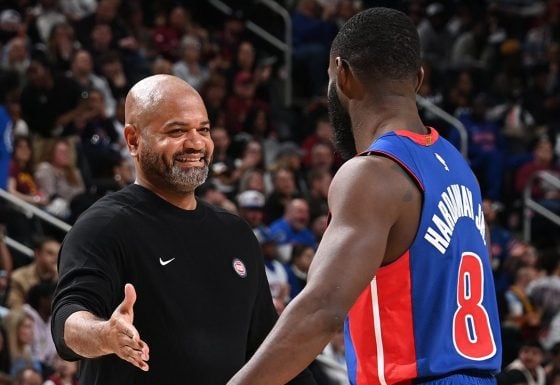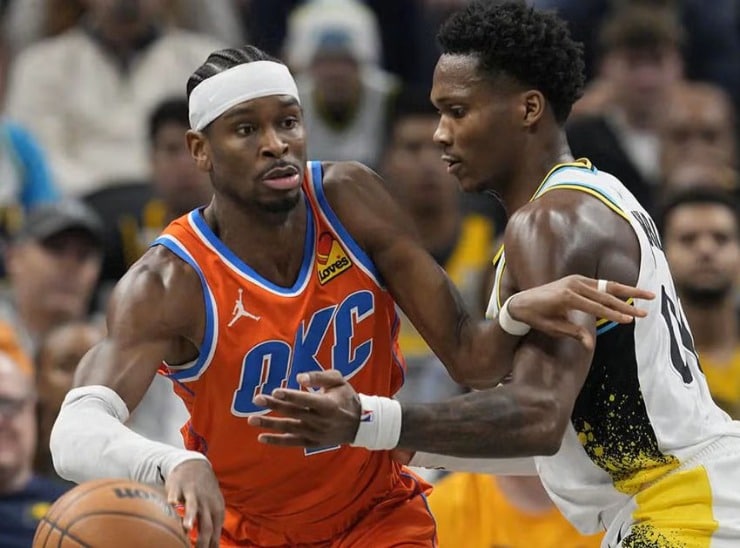Yes, the Celtics are all set at the point guard position — Marcus Smart, Derrick White, and Malcolm Brogdon all contribute to that. Each will attempt to facilitate the offense and run actions for Jayson Tatum and Jaylen Brown.
But, the Celtics also added another point guard in the second round of the 2022 NBA Draft — J.D. Davison. Davison flashed NBA-level potential in this year’s Las Vegas Summer League. It was Davison who offered consistent playmaking ability. It was Davison who ran the pick-and-roll. It was Davison who got the ball to Juhann Begarin and Mfiondu Kabengele with momentum and in space.
He averaged 8.2 assists in Summer League, which ranks third all-time behind Lonzo Ball and Payton Pritchard, per Celtics.com’s Taylor Snow. Through Davison’s playmaking contributions, the Celtics were more than capable of running a spread-out offense, and thanks to Davison’s passing ability, the Celtics shot 37.0 percent from three-point range, making them the third best three-point shooting team in Vegas. That’s something.
JD Davison set a Celtics Summer League record with 41 assists. His 8.2 assists per game rank 3rd all-time league-wide behind Lonzo Ball (9.3) and Payton Pritchard (8.5). pic.twitter.com/R2AZWTCGj8
— Taylor Snow (@taylorcsnow) July 17, 2022
Davison has the burst and handle to drive to the right spot and blow by defenders, forcing the help defense to rotate over to him. That’s where Davison makes his money.
As seen in the video below, Davison has excellent touch on the dump-off pass to Trevion Williams and Begarin after speeding by a closeout. The Celtics Summer League team was unbeatable in early-possession actions, and that was because of Davison’s quickness.
Scoring-wise, Davison averaged 13.0 points per game, and shot an incredibly-efficient 47.0 percent from three-point range. Davison’s touch has been up and down in the past couple of years, as he was a 40.0 percent shooter during his sophomore year at The Calhoun School, then he was near 30.0 percent shooter for the next three years. Fluctuating usage rates has something to do with it, as he only logged a 18.78 usage percentage and averaged only 25.8 minutes per game in his only year at Alabama.
What makes Davison special, despite his low productivity in college, is his quickness and athleticism. He understands how defenders will guard him, and he utilizes his handle to get them out of position. Once the defender is chasing, Davison will go into his bag — crossovers, hesitations, pump-fakes. He’ll stop on a dime so fast that the defender’s momentum will carry them forward.
Here’s a perfect example of Davison executing an isolation, double-crossover move the Celtics went to occasionally. Davison gets Zaire Williams flat-footed after a switch and crosses over twice to freeze Williams, then he uses his explosiveness to fly in for an off-the-glass floater.
Davison’s combination of speed and ball-handling is something that was on full display at Las Vegas. But, another aspect of his game that was showcased in Summer League was his lob-threat passing.
When Davison recognizes the defense and locates the rim-runner, he can continue elevating toward the basket and throw an oop. Or, since Davison is great at improvising in mid-air, he can finish with a layup or floater after the defender rolls to the lob-threat.
In Vegas, the Celtics ran an effective offense with Davison as the primary creator, and that could certainly be his role in Maine while on his two-way deal. From the jump, he was the Celtics best pick-and-roll playmaker in Summer League.
Davison needs to improve as a consistent, NBA-level 3-point shooter for defenses to actually gameplan against him. But, even if he doesn’t become a knockdown, deep-range shooter, Davison can still be a main facilitator on any offense. He’ll spend time in the G-League to develop, but Davison is a pass-first, explosive guard the Celtics could utilize down the road.






